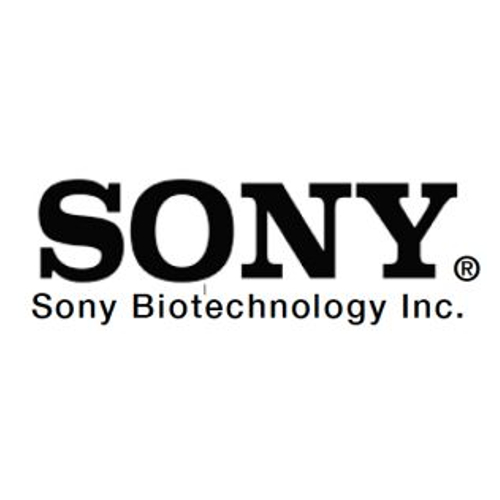CD115 Monoclonal / Brilliant Violet 421 / AFS98
Product Details
| Description | Brilliant Violet 421 anti-mouse CD115 (CSF-1R) | |
|---|---|---|
| Conjugate | Brilliant Violet 421 | |
| Clone | AFS98 | |
| Target Species | Mouse | |
| Applications | FC | |
| Supplier | Sony | |
| Catalog # | Sign in to view product details, citations, and spectra | |
| Size | ||
| Price | ||
| Antigen | ||
| Host | ||
| Isotype |
About CD115
The protein encoded by this gene is the receptor for colony stimulating factor 1, a cytokine which controls the production, differentiation, and function of macrophages. This receptor mediates most if not all of the biological effects of this cytokine. Ligand binding activates the receptor kinase through a process of oligomerization and transphosphorylation. The encoded protein is a tyrosine kinase transmembrane receptor and member of the CSF1/PDGF receptor family of tyrosine-protein kinases. Mutations in this gene have been associated with a predisposition to myeloid malignancy. The first intron of this gene contains a transcriptionally inactive ribosomal protein L7 processed pseudogene oriented in the opposite direction. Alternative splicing results in multiple transcript variants. Expression of a splice variant from an LTR promoter has been found in Hodgkin lymphoma (HL), HL cell lines and anaplastic large cell lymphoma. [provided by RefSeq, Mar 2017]
The protein encoded by this gene is the receptor for colony stimulating factor 1, a cytokine which controls the production, differentiation, and function of macrophages. This receptor mediates most if not all of the biological effects of this cytokine. Ligand binding activates the receptor kinase through a process of oligomerization and transphosphorylation. The encoded protein is a tyrosine kinase transmembrane receptor and member of the CSF1/PDGF receptor family of tyrosine-protein kinases. Mutations in this gene have been associated with a predisposition to myeloid malignancy. The first intron of this gene contains a transcriptionally inactive ribosomal protein L7 processed pseudogene oriented in the opposite direction. Alternative splicing results in multiple transcript variants. Expression of a splice variant from an LTR promoter has been found in Hodgkin lymphoma (HL), HL cell lines and anaplastic large cell lymphoma. [provided by RefSeq, Mar 2017]
About Brilliant Violet 421
Brilliant™ Violet 421 (BV421) is a Violet-emitting non-tandem polymer fluorophore that can be excited by the 405 nm Violet laser and collected using a 450/50 bandpass filter. BV421 has an excitation peak at 405 nm and an emission peak at 421 nm, and is spectrally similar to Alexa Fluor™ 405 and Cascade Blue. Other dyes that are considered similar include SuperNova V428 (Beckman Coulter), StarBright Violet 440 (Bio-Rad) and SuperBright 436 (Thermo Fisher). BV421 is very bright and is most commonly used for flow cytometry. Its photostablity, fixation stablity, and non-toxicity properties also make BV421 useful for cell sorting and live cell Fluorescence Microscopy applications. This dye is part of the Brilliant™ Violet dye line of fluorescent polymers. Brilliant™ Violet 421 polymer is employed as the donor molecule in a series of tandem dyes with acceptor molecules emitting at various points across the visible light spectrum. The Brilliant™ Violet dyes are a superior alternative to QDot nanocrystals and similar to SuperNova dye from Beckman Coulter and StarBright dyes from Bio-Rad.
Brilliant™ Violet 421 (BV421) is a Violet-emitting non-tandem polymer fluorophore that can be excited by the 405 nm Violet laser and collected using a 450/50 bandpass filter. BV421 has an excitation peak at 405 nm and an emission peak at 421 nm, and is spectrally similar to Alexa Fluor™ 405 and Cascade Blue. Other dyes that are considered similar include SuperNova V428 (Beckman Coulter), StarBright Violet 440 (Bio-Rad) and SuperBright 436 (Thermo Fisher). BV421 is very bright and is most commonly used for flow cytometry. Its photostablity, fixation stablity, and non-toxicity properties also make BV421 useful for cell sorting and live cell Fluorescence Microscopy applications. This dye is part of the Brilliant™ Violet dye line of fluorescent polymers. Brilliant™ Violet 421 polymer is employed as the donor molecule in a series of tandem dyes with acceptor molecules emitting at various points across the visible light spectrum. The Brilliant™ Violet dyes are a superior alternative to QDot nanocrystals and similar to SuperNova dye from Beckman Coulter and StarBright dyes from Bio-Rad.
Experiment Design Tools
Panel Builders
Looking to design a Microscopy or Flow Cytometry experiment?
Validation References
Reviews & Ratings
| Reviews |
|---|
Looking for more options?
1044 CD115 antibodies from over 31 suppliers available with over 83 conjugates.





